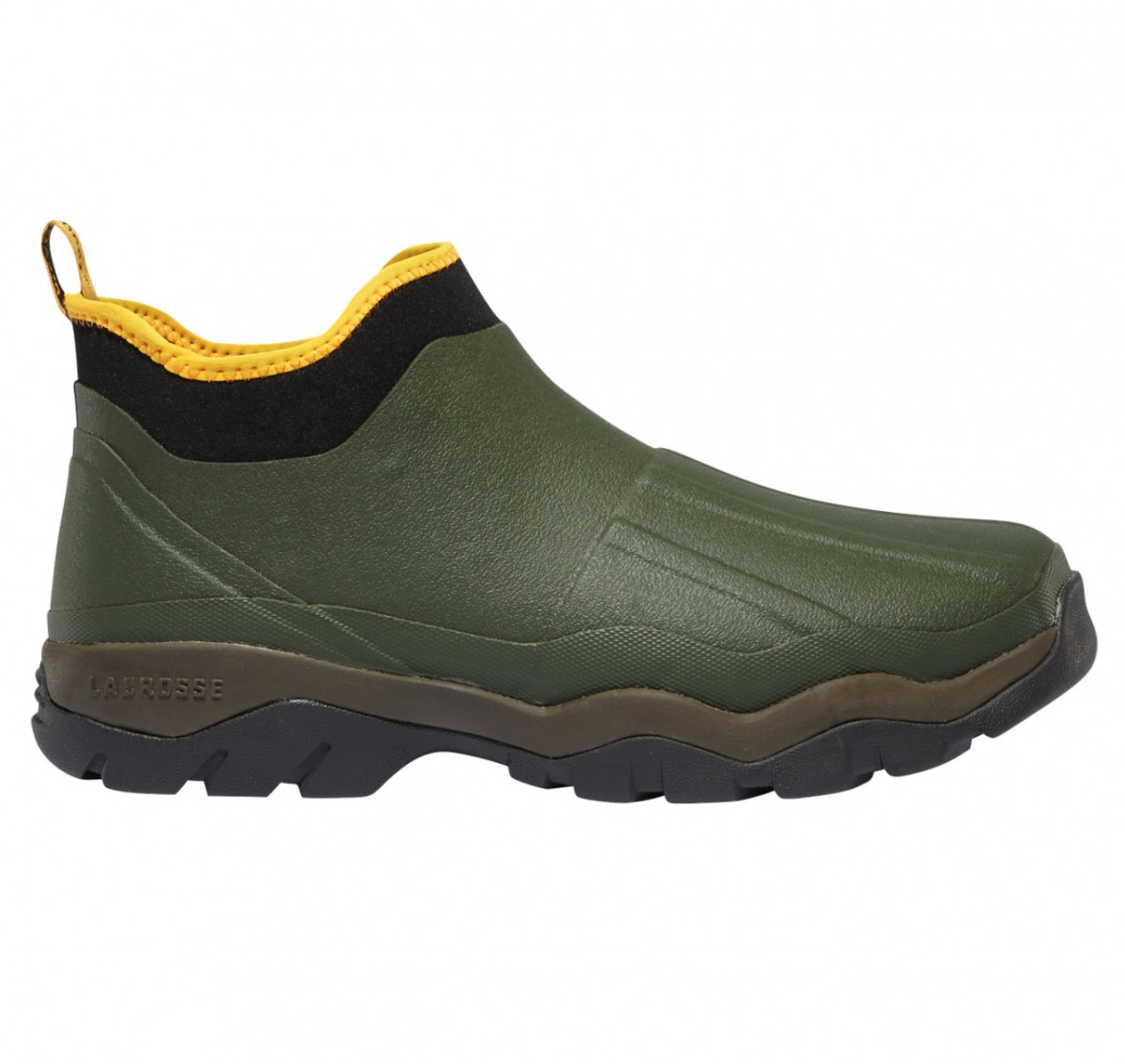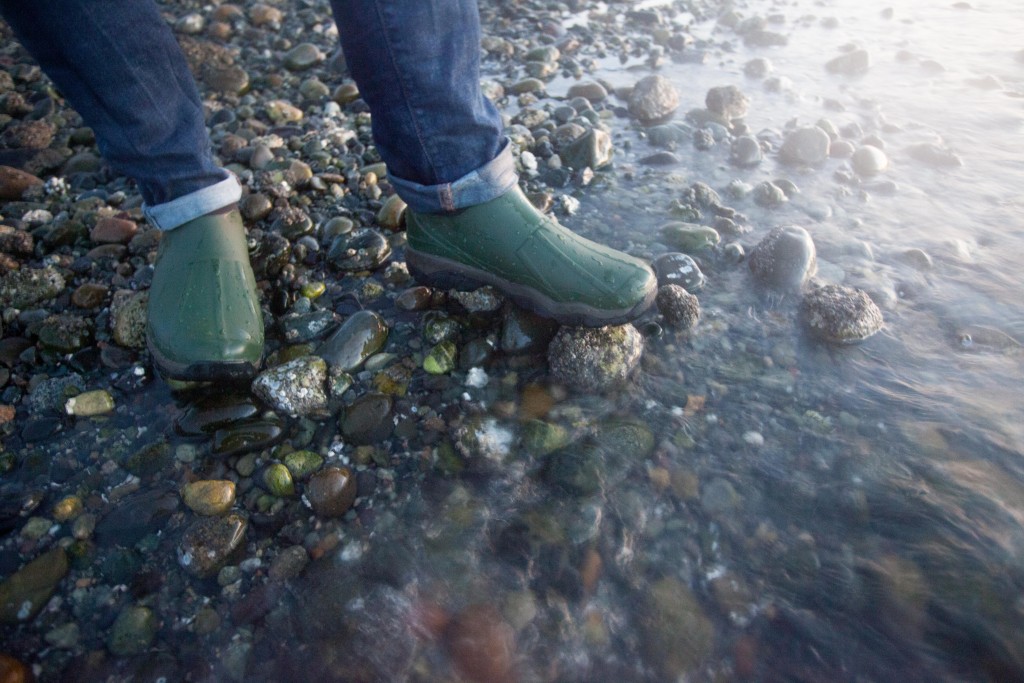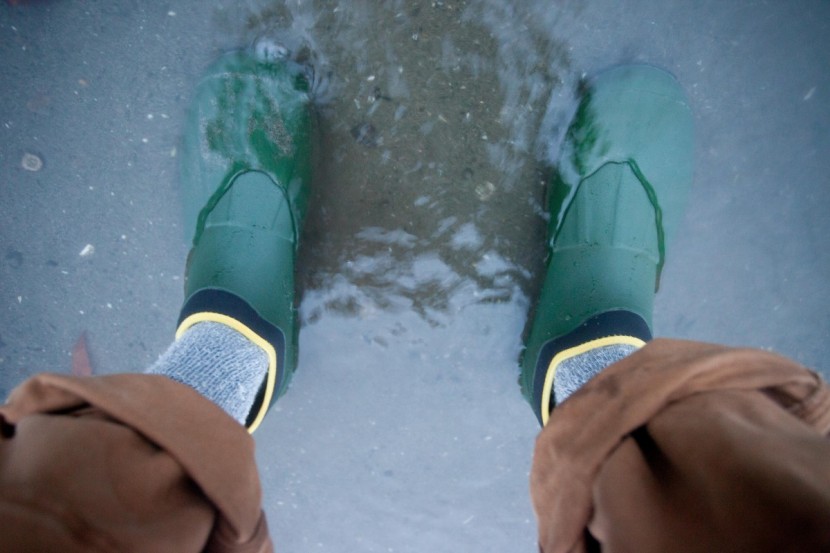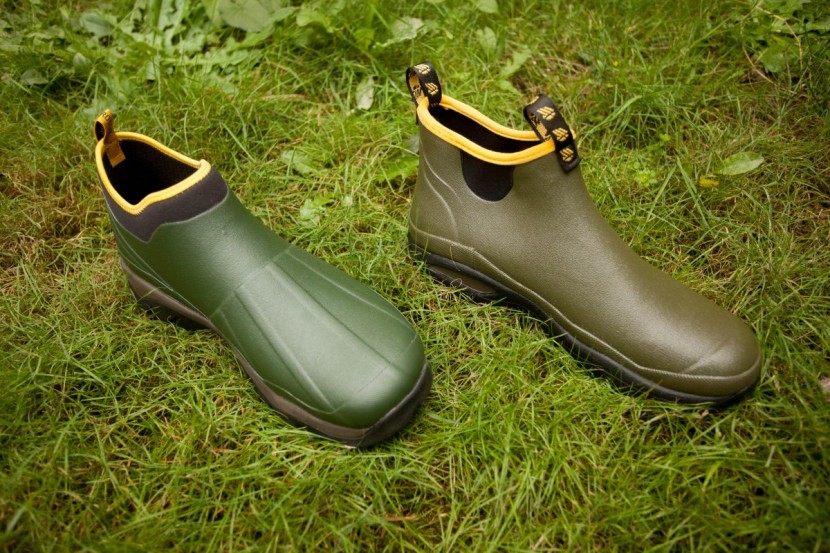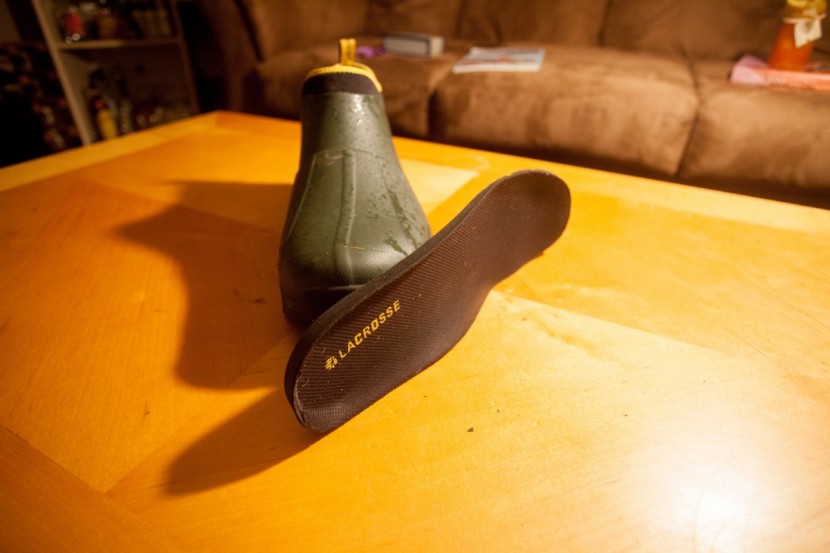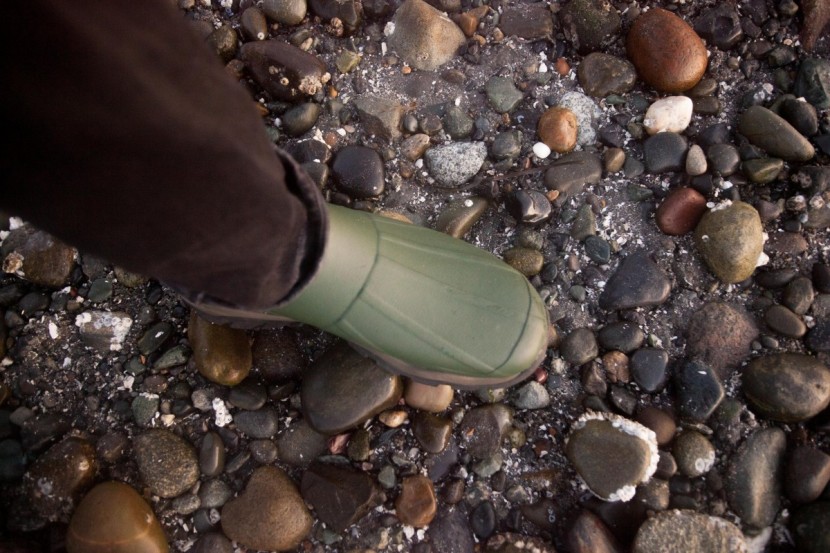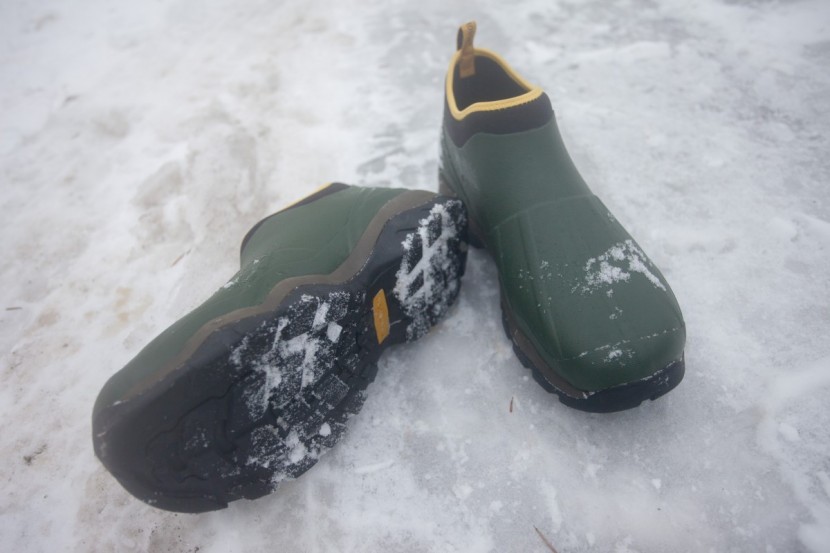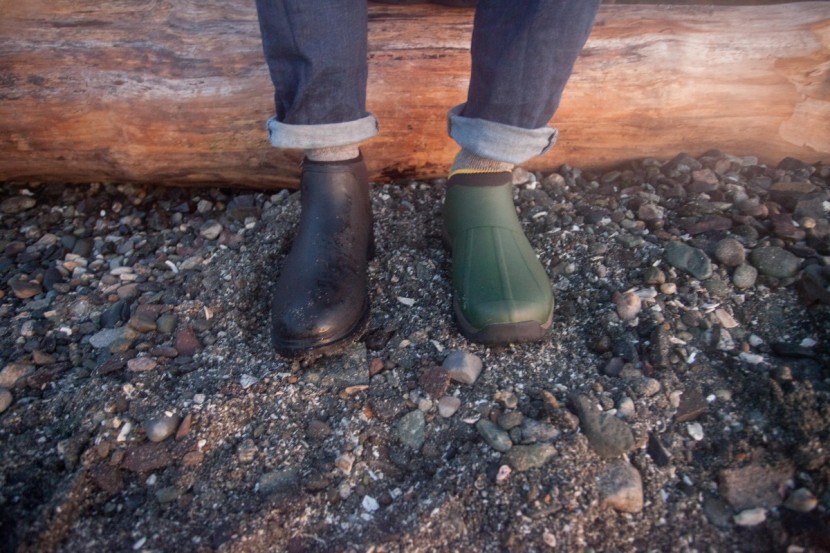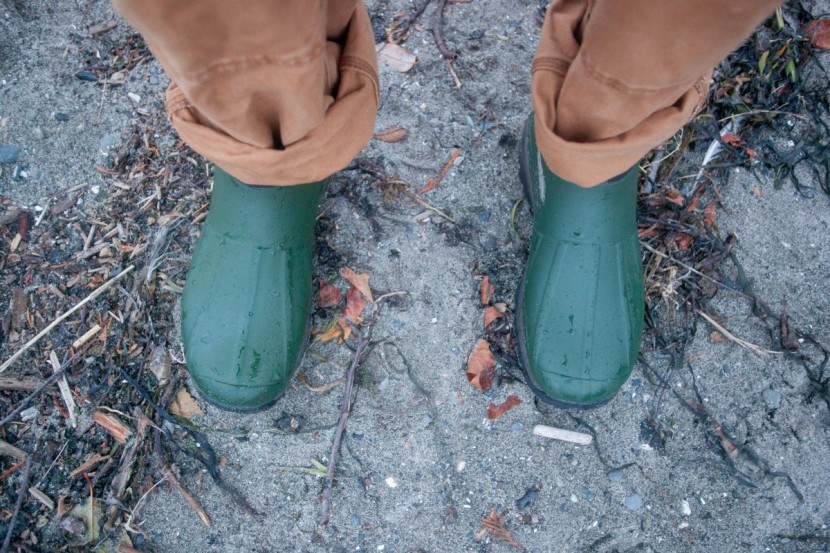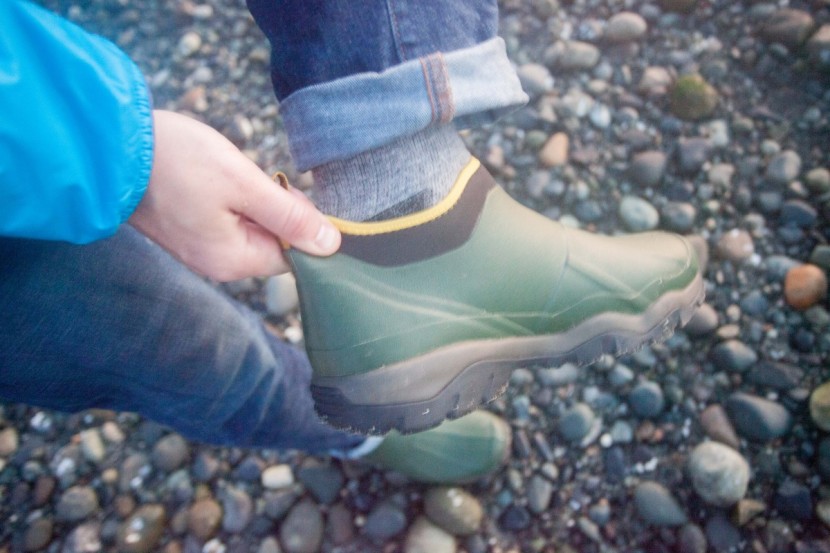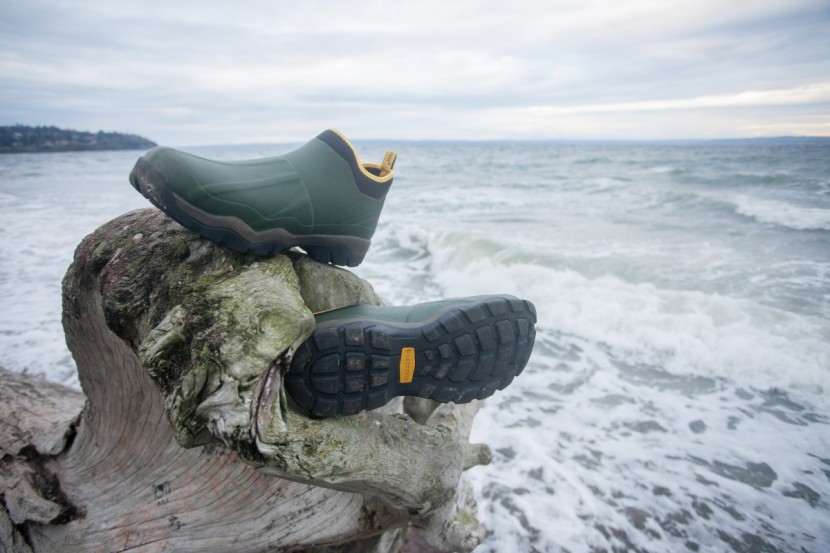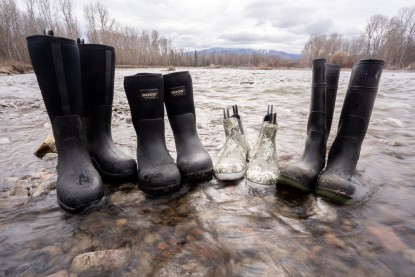LaCrosse Alpha Muddy Review

Our Verdict
Our Analysis and Test Results
These boots didn't measure up well in our battery of tests and only performed reasonably well in one category — warmth. Their issues are largely due to the fact that the shoes are wide, with high volume, and will let your feet slip around unless you actually need the width. You would be better served if you chose another boot from our test.
Weather Protection
With only 5.1 inches of height, it's important to recognize that the Alpha Muddy isn't meant for anything more than puddles and the shallows. When we did our immersion tests, we were constantly worried about every small splash. We don't recommend these unless you really don't need much protection from water and want to be able to fit your boot under standard pants without tucking them in. However, if you're looking for a shorter rain boot, we suggest going for one of the other low rain boots — they all lack the odd color choices and chunky molding of the Alpha Muddy.
Comfort
If we hadn't tried the Hampton model previously, we would have assumed that we had gotten the wrong size of the Alpha Muddy. But since we tested the same size in the Hampton in the past, we repeated that size and toughed it out in order to adequately describe how different the two models are. This looser incarnation of the Hampton slips around and puckers in the heel to the point that they're pretty difficult to use. They do slip on easily, though, but that must be because they're designed for people with large ankles, and once we had them on, they didn't hold our feet well, even with very thick socks.
While we maybe could have benefited from a different size, the Alpha Muddy are still very spacious — our heels constantly slipped around in them. The fit on the Hampton was perfect, so we were disappointed to find that LaCrosse designed the Alpha on a completely different last. We'll talk about specific changes down in the fit section, but the sloppy fit has a big impact on comfort, as our heels slide around in these shoes. It also feels like there's less cushioning in the newer Alpha Muddy, which made them less pleasant for long days.
Additionally, compared to the other boots in our test, the Alpha Muddy has some of the thinnest insoles. We don't find these boots to be comfortable, even during short periods of use.
Traction
The Alpha Muddy don't feature much of an outsole and didn't perform well on any of the surfaces we tested (and were in the lowest tier of this test). We find that they don't feel solid or grippy on any terrain but flat asphalt, and when taken on wet grass, mud, and snow, we were always teetering between slips. When on ice, they're even more slippery. Almost any other boot in the test will offer you better grip.
Warmth
These boots are reasonably warm with socks, though their large fit (and the fact that the tops of the boots don't close as tightly around the ankles) means that cold air easily slips into the boots and chills the feet. They did decently well in our ice water immersion test: our bare feet felt the cold first after 3 minutes and were uncomfortably cold after 5 minutes, especially on the tops of the toes (where they made contact with the inside of the boot). This performance puts these boots roughly in the middle of the pack for warmth.
Style
These rank the lowest in our test, according to our style consultants, who almost unanimously chose them as their least favorite looking shoes. We're not sure why LaCrosse took the Hampton and made them wider, shorter, and added the strange molding lines. Please don't take our opinion as the last word, but when we wear these out and about, we've gotten questions about why we're wearing them.
Fit
Our lead tester has size 12 feet and tested a size 13 — a normal size-up for him. This resulted in an extra inch of room forward and back. There was also at least a quarter-inch of wiggle room left and right (for his D width feet). This means that these shoes, which are designated as a size 13, must be at least a size 14 or bigger (by standard measurements). They are also at least an E width, and probably wider. Additionally, they have a fair amount of volume. If you have high volume and/or wide feet, these boots are ideal; otherwise, they'll float around on your feet.
Value
Unless you need the wider fit, we don't think the Alpha Muddy is worth the high price tag. If you're price-conscious, you'd be far better off getting one of the other budget-friendly boots in our review.
Conclusion
The Alpha Muddy is less comfortable, significantly larger in all dimensions, and features a completely different style than its superior predecessor. Depending on your needs, we feel you'd be better suited in another of the boots in our test.


